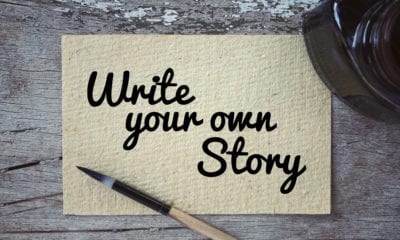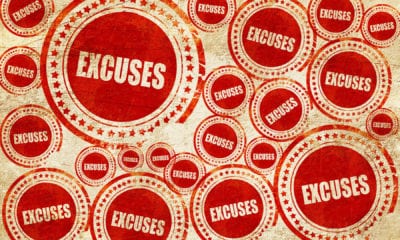Books
The Power of Habit by Charles Duhigg
Habits are powerful but delicate. They can appear outside our consciousness or can be deliberate. Although habits seem automatic, and to a large extent, a product of a series of sometimes conscious or unconscious actions, the good news is that they are not impossible to change.


Reading has the potential power to re-invent lives. However, it is quite sad to say that not many people in the United States enjoy reading. According to the data that was released by the Pew Research Center in 2015 on American reading habits , it is sad to say that the reading habits of Americans are fast declining. According to this study, only 72 percent of American adults took time to read just a book in 2015—a continuous gradual decline when compared to 79 percent in 2011. Our Book Reviews category is our contribution towards helping to reverse this sorry trend and habit. Today on the Oaekpost Book Review Bookshelf, we will be reviewing the book, The Power of Habit by Charles Duhigg.
“Good habits formed at youth make all the difference.” — Aristotle
Hindsight they say is 50/50. The worst phrase anyone can use in life is, “If I had known, I would have made a different choice.” No one wants to live a life that is perpetually full of regrets. At some point in your life-walk, you will a need to reflect on your choices. To take a mental journey to assess the things you did right or wrong—call it a self-SWOT analysis if you will, where you evaluate your Strengths, Weaknesses, Opportunities, and Threats. Self-reflection is a crucial tool in assessing yourself to understand your past, to re-evaluate your present, and possibly re-create your future. Self-reflection allows you to look for clues to identify the habits, critical behavioral patterns and character influencers that have formed your choices so that you can make more proactive decisions going forward.
At this juncture, you come to the realization that where you are currently situated in life is only a product of the choices that you have made in the past. That is why we are calling out self-reflection as a crucial tool in personal self-assessment. You take stock of things that have happened in your past in other to re-invent your “now;” which propels you to change your tomorrow. Look at your life—x-ray your past, present, as you think about your future—the fact is that there are some things you might have done that you wish you had not done or would want to stop doing. Changing old habits and developing new ones can be as tough as trying to remove a stubborn nail from a wooden beam. You might have tried several times to break a bad habit, but the effort to re-invent yourself without encouragement might leave you feeling frustrated.


The difficulty inherent in single-handedly trying to change a bad habit is that if you don’t stay consistent, over time, without you knowing it, these negative patterns might begin to resurface. In the advent of this resurgence, you relapse and get back to doing the very things that you may have been investing a lot of time to break away from. A lot of people get on the bandwagon of changing a habit but quickly fall off from it because they failed to sustain their resilience towards continuing the journey of transformation. Habits are powerful but delicate. They can appear outside our consciousness or can be deliberate. Although habits seem automatic, and to a large extent, a product of a series of sometimes conscious or unconscious actions, the good news is that they are not impossible to change.
“Your net worth to the world is usually determined by what remains after your bad habits are subtracted from your good ones.” — Benjamin Franklin
Habits shape our fate. We see on many occasions that people don’t live the way they want. In various instances, a lot of people don’t eat, sleep, exercise, parent, or work the way they know they should, because of the habit they have cultivated. Bad habits have the power to impale a bright future. On the contrary, a good habit has the potential to propel us towards a destiny that we would end up being proud of. With the Power of Habit, Charles Duhigg empowers the reader to see that you can change those habits that have negatively affected your life. So, don’t lose faith—stay motivated and stay on the wagon of change—don’t fall off. Remember that motivation is what spurs you on to get started on the journey of transformation, and a habit is what keeps you going. Always remember that “Determination today will lead to success tomorrow.”


Habits can be used to form meaningful results for individuals, organizations, and societies. Habits are also acquired behavior patterns that are regularly followed until it has become almost involuntary. They become automatic responses that often operate without our conscious awareness and can be extremely hard to change. For instance, you cannot order people to change their character instantaneously. They will most likely rebel for that is not how the brain functions unless it has been conditioned to follow orders like a soldier. It takes a while to form or break a habit, many say 21 days, and some say 66 days. Whether it takes 21, 66, or 250 days, the journey towards changing a habit starts from day one.
In Charles Duhigg’s engaging opus, “The Power of Habit,” he does due diligence in investigating how habits form, how to cultivate new habits, and how to change old ones. In helping readers address all areas of their lives, he prudently divides the book into three sections starting the one closest to home—you, as an individual—it all begins with you, the man, woman, or child in the mirror. He then cleverly moves to the broader world of organizations and finally narrows the focus to societies. We will now delve into the several summaries from each chapter of the book.
Chapter 1: The Habit Loop—How Habit Works


When a habit bubbles up to the surface, the brain restrains itself from fully engaging in the decision-making process. It ceases to work so hard or redirects focus to other tasks. So, unless you deliberately fight a habit, unless you find new routines—the pattern will unfold automatically in a repetitive vicious cycle. Habits never really disappear. Once perfected, they become engraved into the structures of our brain like ancient Egyptian hieroglyphs set in stone. These patterns are at the root of how we behave.
Chapter 2: The Craving Brain—How to Create New Habits


Habits create neurological cravings. As we associate cues with specific rewards, a subconscious yearning emerges in our mind that starts the habit loop spinning. Habit becomes automatic when the brain anticipates reward—an endorphin rush or a sense of accomplishment—in pushing beyond the pain of a depriving urge. Craving is what drives and feeds a habit.
Chapter 3: The Golden Rule of Habit Change—Why Transformation Occurs


Often, you don’t understand the craving driving your behavior until you search them out. To ensure that a habit stays changed, and transformation occurs, people must believe in the possibility of the change. Though it is easy to decide to break or develop a habit or practice, this does not necessarily follow that it will be easy to accomplish. However, at the same time, becoming aware of your patterns and their cues is a great leap towards gaining control over them. Once you become acquainted of how your habit operates; once you understand its cues and rewards, you are halfway on the path towards changing it.
Chapter 4: Keystone Habits—Which Habits Matter Most


Habits come in degrees—some habits matter more than others when it comes to redefining lives and businesses. These are Keystone or Foundational Habits or Customs, and they wield a potent power when it comes to influencing how people operate in their individual and professional lives, what they eat, how people play, live, spend their resources, and communicate with others. Keystone habits mark the inception of a process that transforms everything over a period. Keystone habits state that achieving progress doesn’t rest on getting everything accurate, but first rests on identifying a few key priorities and modeling them into power levels.
Chapter 5: The Habit of Success—When Willpower Becomes Automatic


Willpower can be defined in many ways: as self-discipline, determination, self-control. More technically, it is the capacity to hold off short-term satisfaction in other to reach long-term goals. It is the ability to override an unwanted impulse and regulation of the self. Willpower is a vital keystone habit for individual success. If they have a hint that they are completing a required or delegated task for personal reasons, or if it feels like it’s a choice or something they enjoy because it helps someone else—it’s much less tasking to accomplish. However, if they feel like they have no autonomy, and are just following orders in a transactional process, their willpower-muscles get tired much faster. Willpower is a learnable skill. It is an ability that can be self-taught. It isn’t just a craft. It’s comparable to the human muscle, and it gets fatigued as it works harder and harder, so there’s less stamina left for other things. Once willpower increases its strength, it touches everything else that surrounds it.
“Patterns of repetition govern each day, week, year, and lifetime. ‘Personal habits’ is one term we use to describe the most common of these repeated patterns. But I say these habits are sacred because they give deliberate structure to our lives. Structure gives us a sense of security. And that sense of security is the ground of meaning.” — Robert Fulghum
Chapter 6: The Power of Crisis—Creating Habits Through Accident and Design


Crises are moments in the life of organizations, which make change possible in the first place. The crèche of change is crises. Good leaders seize the period the company is in crisis to remake organizational habits. Crises offer proactive organizations various valuable change management and process optimization opportunities. It is a place of change, innovation, and improvisation. A company with dysfunctional habits will baulk at participating in any new change process just because a leader orders it. Instead, wise executives seek out moments of crisis or create the perception of a looming disaster to cultivate the need that something must change. This ruse would continue until everyone’s buys-into the organization’s new goal.
For instance, Tata Motors’ passenger vehicle (PV) business experienced a crisis in their industry. The executives resorted to the “GEAR” (Generate idea, evaluate, action and realize the idea) Logic strategy as an avenue to help the organization experience a turnaround that has helped the company bounce back distinctively to an ochroid point of reckoning in the PV market. They keep their staff in a permanent state of paranoia, keeping them productive by continually reminding of the past crises that the company experienced when their PV market took a plunge. Individuals and organizations alike need to capitalize on crises as an avenue to forge creative solutions to rescue them from the crisis-shipwreck that they experienced.
Chapter 7: When Companies Predict and Manipulate Habits


Over the past twenty years, companies are now leaning heavily on big data to predict more accurately the buying habits of consumers in the marketplace (i.e., predictive analytics). The realization emanating from these metrics is that most consumers make purchasing decisions the moment a customer sees a product. Companies can use the information that they collate about customers to model their marketing plans on the behavior of these customers. They use these habitual behaviors in the architectonic and modular layout or design of their stores—guiding the unwary and unsuspecting customer through the store. The goal is to feed the impulsive cravings of the customer so that he or she ends up buying and spending more than they initially anticipated upon entering the store.
Companies that use these advanced data mining techniques also found something else that is crucial to their marketing success. They found that when people go through significant life events, they often change their purchasing habits. Big data helps companies predict and manipulate buyers purchasing habits for profit aggrandizement purposes. For instance, they rely on big data to monitor the mobile browsing habits of consumers. Have you ever suddenly stumbled over an ad relating to some merchandise of interest while phubbing through your phone or tablet device? There is nothing sudden about it at all—your past mobile browsing history and habit is being steadily mined by organizations for suggestive marketing purposes. If they can learn and predict your habits, the better they are able to pitch products to you that align with your characteristic behavior—their goal is to capitalize on your cravings in other to grow their earnings.
Another instance is the Coca Cola’s “Happiness in a bottle” marketing campaign. This campaign presupposes that regardless of any changing life event you go through, the memory of that event won’t be complete without a Coca-Cola. How’s that for a marketing campaign? Organizations mine the customary behaviors of consumers to further their cause and enshrine their brands in the hearts of consumers. Habit is powerful, and companies are capitalizing on it to increase their earnings. The more reason for people to realize the power of mannerisms. Coming to this reality will help people curb their excesses or seek out avenues to change their bad habits before it brings them to ruin. The truth is that companies will not be stopping any time soon with their predictions or attempts to sway customers. After all, advertisement, they say, is the right to choose—and it sure is.
Chapter 8: How Movements Happen


The inception of a movement commences because of the social habits of friendships and the strong ties that spawn between close acquaintances. It grows because of the practices of a community and the relationships that hold neighborhoods and clans together. It endures because a movement’s leader gives participants new habits that create a fresh sense of identity—a culture—and a feeling of ownership. Our most profound relationships tend to be with people who look like us, earn about the same amount of money or come from a similar background.
For an idea to develop past a community, it must become self-propelling. The reliable way to achieve that is to give people new habits that help them figure out where to go on their own. Movements don’t emerge because everyone suddenly decides to face the same direction at once. They rely on social patterns that begin as the habit of friendships. It then grows through the practices of communities, being sustained by new habits that change the participant’s sense of self.
Many movements start spontaneously, without anyone deliberately or even unintentionally initiating them, without also building on the strong ties of friendships. Living in an era dominated by technology helps the spawning of the habit of campaigns. However, for the movement to stay alive and grow, members of a population need to feel like “everyone” is getting involved. Campaigns form the bedrock of influence marketing.
Chapter 9: The Neurology of Free Will—Are We Responsible for Our Habits?


Once you recognize that habits can change, you have the liberty and the capacity to remake them if you so choose. If you believe you can change, if you make it a habit—the change becomes a reality. This inherent ability to decide to change your life and see the actual effect in your daily experiences is the real power of habit—an insight that your pattern of behavior is what you choose them to be. Once that choice occurs and becomes automatic it does not only become real; it starts to seem inevitable—the neurology of free will in action.
The Death Crawl scene from Facing the Giants
Charles Duhigg’s “The Power of Habit” does a great job in elucidating into the power that habits can wield in the life of an individual, organization or even in the society. In the first chapter, we saw habit can quickly form a vicious cycle (i.e., the Habit Loop) when it gains its footing via repetitive actions. Second, we saw the craving brain as the foundation for forming new habits. Craving is what drives and feeds a habit. Third, we saw the golden rule of habit change and why transformations occur. You need to believe in the possibility of the change happening in the first place. Fourth, we saw that some habits matter more than others when it comes to redefining lives and even businesses. These habits that wield the power of influence are called Keystone Habits. Fifth, we saw that we develop the habit of success when willpower, a keystone habit, becomes automatic. Sixth, we saw that the crèche of change is crises. It is possible to form habits out of a crisis, and it can become leverage in organizational leadership. Seventh, we saw that companies are also happy to predict and manipulate habits using big data. Eighth, we saw that societal movements or campaigns happen due to friendship habits that form along the way. Finally, ninth, we looked at the neurology of the free will and how we are responsible for our habits. There is no better primer on habit than Charles Duhigg’s “The Power of Habit.”
Change might not be fast, and it indeed isn’t easy to actualize. However, with time and effort almost any habit can be reshaped or even developed. However, we must be tenacious and steadfast in our efforts towards changing or developing a habit. Times will come when you want to give up in the habit change or development process, but you must forge ahead unrelenting and giving your absolute best to the process. Even when the pain becomes so unbearable in the death crawl challenge of change, you must continue to give your absolute best believing that the change you anticipate will become a reality. The onus lies on you to keep going! The responsibility rests on you to give your very best! Keep driving through the hurt—Don’t quit! Don’t stop! Don’t bend! Don’t resign! Yes, you might be blindfolded and unable to see the fruit of the process, but you need to keep pushing with the belief that you can change or develop that habit! Keep moving until you reach your own end zone of your change! Keep going until you got nothing left! We can determine our habits, mannerisms or customs once we know how. Therefore, choose right at the junction of decisions. Only “You” have the ability and the responsibility to reshape your life and your world.
(NB. The article above is just a short synopsis of the book, The Power of Habit by Charles Duhigg. This book will add value to the mind of those who want to transcend in developing habits that will transform their lives. Hopefully, this short book review motivates the reader to want to read the entire book. If yes, grab a copy, read it, and get the full bulk of its message).
References
- DiFranco, T. (2012, November 30). The death crawl scene from facing the giants [Video file]. Retrieved from https://www.youtube.com/watch?v=-sUKoKQlEC4&list=RD4do_nqkYF7M&index=4
Books
Unearthing Your Latent Potentials: A Book Review
The Prairie Book Review’s perspective on the book, Unearthing Your Latent Potentials: Discovering the Gems of Your Subliminal-Self by Ogbonnaya Agom-Eze


Reading will revolutionize your life. It will transform your thinking, which will end up changing your life. Let reading become your culture. Let reading become your life as you push yourself towards becoming your best self ever. When you find a worthy book, I implore that you follow the injunction of Charles S. Spurgeon, who said, “Master those books you have. Bathe in them until they saturate you. Read and reread them, masticate them and digest them. Let them go into your very self.”
The Prairies Book Review is a book review service that provides first-rate editorial book reviews for authors. In their words, “In today’s competitive world of online book promotions, readers appreciate well-written editorial reviews.” Here is an Editorial Book Review on my second book, “Unearthing Your Latent Potentials: Discovering the Gems of Your Subliminal-Self.” I will let their review do the rest of the talking.


BY THEPRAIRIESBOOKREVIEW on JANUARY 23, 2021
A supremely practical and useful book…
Agom-Eze stresses the importance of individual self-awareness and personal discovery of one’s abilities in this empowering guide.
His comprehensive approach starts with developing one’s hidden potential. The bulk of the book details how, after unraveling your hidden potential, you can become a better version of yourself and achieve success that you really deserve. Agom-Eze lays out a unique, structured, and methodic path of psychological self-discovery: SWOT Analysis Matrix and PDCA Cycle to help readers unearth their full potential.
He takes readers into a journey of self-revealing introspective questions to help them dig deep into their subconscious and unravel their weaknesses and strengths and recognize available opportunities as well as any threat.
Agom-Eze argues that our innate powers are our inward potentials, and if a person is aware of those powers, they can possibly mitigate or entirely eradicate their weaknesses and use their strengths to exploit available opportunities and remove any threat that may come their way while working toward their goal. He also explores the process of identifying the products and by-products of one’s newfound ability which comes in the form of skill experience, confidence, competence, passion, enthusiasm, valuable network and service among other and the ways to trade these outputs for ultimate success.
Comparing one’s inner powers to a realm of relative ease, cerebral peace, and tranquility, Agom-Eze encourages readers to reveal their inner potentials and work on their refinement through persistent repetition and mastery. From fear, self-doubt, procrastination, to giving up prematurely and laziness, these are the traits because of which many people end up living below their protentional. He establishes that what stands between you and your best self ever is your energy, perseverance, and your sheer willingness to try.
Agom-Eze’s words resonate, whether he is reflecting on the questions of why are potentials latent or hidden, outlining various preparatory activities such as the art of journaling, noting patterns, and drawing up a vision of one’s life, addressing ways to identify outputs of one’s potentials and trading them or outlining the ways through which readers can sustain their success.
There’s plenty of business jargon and a handful of practical examples. The stories of famous, successful personalities such as Serena Williams, Jack Ma, Sherrie Silver among others make the narrative intimate and lively.
Urgent and actionable, this passionate manifesto about the unlimited possibilities dormant inside all of us will be a welcome addition to any reader’s bookshelf.


Now you have read their own words and gained the perspective of what they think about the book “Unearthing Your Latent Potentials: Discovering the Gems of Your Subliminal-Self.” Hence, if you want a “supremely practical and useful book” that will revolutionize your life, then this book is a must-have. Stop missing out on the change that can happen in your life, grab a copy of this book and start the transformational journey that will renew your life and mind.
Books
From Good to Great by Jim Collins
Good to Great by Jim Collins tried to understand and answer the question which most businesses today ask, which is, why do organizations that are in the same industry succeed while others fail?


The concept of reading needs to be re-invented. The art of reading is fast becoming a lost art. We need to re-invent the culture of reading in our society. We are what we read. As we peruse through the pages of good books, the words that we are internalizing begins to influence us. Words are potent. As we read, our mind begins to undergo a metamorphosis. We begin to think in line or out of line, under the influence of the author’s mind. Hence, as we study, we become. If we do not read, we do not become. Reading fills our thoughts with new ideas. The absence of reading makes our minds devoid of creative thought and innovation. René Descartes’ famous statement states, “Cogito ergo sum,” which when translated means, “I think therefore I am.” Today, in the spirit of re-inventing the art of reading, herewith assert, “Lego cogito ergo sum,” meaning, “I read therefore I am.” Today on the Oaekpost Book Review Bookshelf, we will be reviewing the book, From Good to Great by Jim Collins. As we read, may we go from being good to exceptional.
“We Are What We Read.” – Mark Crispin Miller
Most companies we celebrate for their outstanding contributions in revolutionizing how we live and do business today operated in years of obscurity before their exceptional results compelled the world to notice them. These organizations like any other went through cash flow issues, burn out, failed ideas, high staff turnover and in some cases near bankruptcy until they got to the inevitable transition point that launched them into the limelight.
Jim Collins, the author of Good to Great with his 20-man team, generated over 6000 articles and 2000 pages of transcripts from 1,435 companies interviewed before they finally found the Eleven (11) Companies that became great to use as case studies for this book. Jim and his team looked at companies that had same opportunities. They found comparable companies in an industry with similar products and then began the in-depth research to understand why companies with similar characteristics, playing within the same industry do not all become exceptional.
The book tried to understand and answer the question which most businesses today ask, which is, why do organizations that are in the same industry succeed while others fail? Also, what made these organizations succeed within the same environment when their competitors operating under the same political clime and business environment did not. Collins and his team studied these exceptional organizations: Abbott Laboratories, Fannie Mae, Gillette, Kimberly-Clark Corp., Kroger Co., Nucor Corp., Philip Morris, Pitney Bowes, Walgreens, Wells Fargo, Circuit City. They discovered that these organizations became great not by being ‘in the right industry at the right time,’ but by identifying their unique strengths and working relentlessly to capitalize on them.
Looking in from outside, it would seem that the remarkable results these companies achieved happened overnight. What most people do not understand about business is that there are no quickies that guarantee success. Achieving corporate success in businesses many at times take a considerable amount of time. It is usually a process that takes a lot of resources—financial and intellectual. The leap from good to great only occurs after years of consistent effort, discipline and belief in the global vision of the organization. It is what Collins calls ‘pushing against the flywheel.’
The companies that transitioned from good to great established a consistent system with clearly defined success indices. These organizations also gave their employees the freedom and responsibility within the framework of that system to thrive. The secret to their success was not hiring people that needed incentives to be motivated. However, these exceptional organizations only hired people who did not need to be managed but were motivated self-starters. They in turn then led the system, and not the people.
Jim Collins established that the first step in getting a ‘great’ company rolling forward towards success is by making sure that the right people are onboard. Have a vision, and then employ only those whose vision aligns with that of the company to work towards the organizations’ vision. Ensure that the people onboard are complementary and reflect the company’s values. Then together, the company can achieve their global vision. In the book, Jim Collins identifies the reason why it is a lot easier to motivate the right people. The reason he gave was that the right people enjoy what they do. Working with the right team makes work go on seamlessly with little or no hitches. A complementary team makes work not feel like hard work. A team with great synergy makes working together a most enjoyable process.
Jim Collins believes that a company needs to pursue a culture where disciplined employees are consistently taking disciplined actions. Discipline in organizations allows for order and structure to be the guiding mantra of the organization. The concept of order and structure in a company removes any chance for a chaotic organizational atmosphere. Beyond ensuring that employees are self-motivated, as a business owner, one needs to check that the employees are dedicated and passionate enough to be willing to work extra hard when required.
Collins writes that “Good is the enemy of great.” That is one key reason why very few, so organizations become great today. Great emphasis must be put in place to change the narrative and buttress the point that organizational metamorphosis cannot happen with the just “good” mindset. Organizations will not be able to morph from good to great if today’s business owners do not correct this mindset. CEO’s must begin to see the change as a process that shows its result over time. The outstanding results seen with the eleven companies in the book is the outcome of a well-orchestrated organizational transformation process.
Key Lessons from the Book
First, good to great companies get the right people. Collins and his team found that when the executives of good to great firms began their corporate transformations, “they first got the right people.” We cannot overemphasize the importance of employing the right people from the beginning. The right employees will be able to adapt to any changes in direction or strategy. An organization will not have to motivate them because they share the desire to achieve greatness and therefore are already motivated. Interestingly, regarding remuneration, the great companies pay no more than those that categorized as being merely good at what they do. Also, when someone has something, they are genuinely passionate about, great pay then stops being a significant factor in motivating people. As Collins puts it, “Great vision without great people is irrelevant.”
Second, good to great companies thrive on honesty. Great companies distinguish themselves through their reliance on the facts or in today’s term, data, in their decision-making process. The best companies always uphold the truth no matter who speaks it. There are no gray areas with great companies—data speaks in the decision-making process and greatness happens as a result. These organizations have an open-door policy culture of questioning and openness with no relevance to rank.
Third, good to great companies have a reason and purpose for being. These great companies have a single idea or focus, which guides everything they do. Individuals can apply this lesson to their lives as much to the organization. Collins has a three-circle model to test for greatness. This model is called The Hedgehog concept. The first circle is the awareness that one can be the best at in the world. Being the best at something involves a realistic appreciation of one’s abilities. The second circle is understanding what drives a person or organization’s economic engine (i.e., where exactly does profit come from most abundantly). The third circle is passion. Placing a limit on oneself to do what one is passionate about may not bring about great wealth. The hallmark and inception of a great enterprise will dwell on discovering something that one excels at beyond any other person and with the ample potential of making money while doing it.
Fourth, good to great companies use technology as an accelerator. Great organizations have a vision and do not lose sight of their key focus. They use technology as a vehicular contrivance to assist their quest of reaching their goals at a quicker pace. Technology has a way of speeding up the rate of change in organizations. Hence, great organizations must structure themselves in a way that they quickly adapt to the change that technology brings. Companies that go from good to great do not hop on technological bandwagons or chase after trends. They determine and come to a consensus on what technology makes the most sense for them and then pioneer its application to maximize it to the fullest.
Fifth, good to great companies adopt a Level 5 Leadership strategy. Collins goes on to identify “Level 5 leadership” as a common characteristic of the great companies assessed in the study. This type of leadership forms the top level of a 5-level hierarchy that ranges from merely competent supervision to strategic executive decision-making. The personal ego and individual financial gain are not as important as the long-term benefit of the team and the company to authentic Level 5 leaders.
Sixth, good to great companies adopts a culture of discipline. We should never confuse a culture of discipline with a strict authoritarian environment. Jim Collins reference to the term discipline in describing the role it plays within a business is an organization in which an unrelenting inner sense of determination drives each manager and staff member. In this type of organization, each employee functions as an entrepreneur, with a deeply rooted personal investment in both their work and the company’s success.
One action point Jim Collins suggested in the book is that individuals or organizations should “leap from great to enduring great.” Companies that attain greatness do so by staying focused. They focus on their products, services, are obsessed with their customers and their businesses. These companies or even individuals aspire to higher levels of excellence. They never rest their oars. They never become lax and complacent. They stay energized and are always passionate about their products and services as they forge onwards towards greatness and to greater greatness.
In the final chapter of the book “Good to Great,” Collins establishes a link between this hundred-proof book and his previous work, “Built to Last;” which was a representation of the conclusions of a six-year inquiry into the factors that determined whether a fledgling organization or company would survive in the long term. He contends that companies need a set of core values to achieve the kind of long-term success that could eventually lead to greatness.
The reasons why companies should exist should rest on the foundations of a higher purpose than merely on the pedestal of just profit generation to transcend the category of merely good, to a grand status of distinction. According to Collins, this purpose does not have to be specific even if the shared values that compel the company toward success are as open-ended as being the best at what they do and achieving excellence consistently.
(NB. The article above is just a short synopsis of the book, From Good to Great by Jim Collins. This book will add value to the mind of those who want to transcend from just being ordinary to extraordinary. Hopefully, this short book review motivates the reader to want to read the entire book. If yes, grab a copy, read it, and get the full bulk of its message).
Books
7 Habits of Highly Effective People by Stephen Covey
One book that comes to mind that I readily recommend to anyone whose purpose is to live life by design is Stephen Covey’s 7 Habits of Highly Effective People. The author, Stephen Covey, describes the seven habits as a compilation of success indices which those whose desire to lead a more productive life can follow to redirect their mindset and recreate their lives.


Reading is the catalyst that activates the mind. As a man or woman thinks, so they become. Words are the food of the soul. What we internalize is what we will eventually externalize. We become what we read. When we read good books, we are extending the reins and capacity of our minds. By reading, we are challenging our minds to think more. According to Richard Nixon, we are “exercising our brains” when we read. In a jet-set-age, as we live in today, a lot of people sit under the heavy influence of the television. Very few people make out time to read. Great minds will look for avenues to feed their intellect via the concept of reading a good book. Readers eventually will become leaders. Today on the Oaekpost Book Review Bookshelf, we will be reviewing the book, 7 Habits of Highly Effective People by Stephen Covey. Let’s make reading a habit.


“Reading not only enlarges and challenges the mind; it also engages and exercises the brain. Today’s youth who sits mesmerized by a television screen is not going to be tomorrow’s leader. Television watching is passive. Reading is active” – Richard M. Nixon
The Greek philosopher Epictetus said, “First say to yourself what you will be: and then do what you have to do.” To want success is easy, but to do what it takes to become successful is the hardest part of a personal change. It requires us to change our habit, the way we think and view life, what we say, when we say it, how we mean it and to whom. Personal change requires a total character overhaul and consistent development and retooling of new habits over time.
A goldsmith would tell you that the process of refinement to take gold from its most unpurified state to the stage where it becomes priceless is never easy. It takes time, dedication, and a lot of effort to actualize such a change process. Likewise, to achieve personal success and live our best lives, the phases of character purging and purification must take place and should start with the determination to do what is right.
Having a comprehension of the right thing to do and taking actions to accomplish it are two worlds apart. One guides you through idealism and escapism while the other brings you closer to reality, discipline, and accountability. The differentiation factor between the two boils down to the choices and sacrifices we are willing to make to begin the change process from negative to a more proactive pattern.
Change can only start when we audit our habits, emotional outbursts, attitude, and behavior towards the people within our immediate environment. This self-audit is the first step towards loving ourselves and believing that it is possible to change our present circumstances regardless of how many mistakes we have made and to choose to live life by design.
One book that comes to mind that I readily recommend to anyone whose purpose is to live life by design is Stephen Covey’s 7 Habits of Highly Effective People. The author, Stephen Covey, describes the seven habits as a compilation of success indices which those whose desire to lead a more productive life can follow to redirect their mindset and recreate their lives.
The seven habits state that habits are formed when we repeatedly behave in a particular manner or show a consistent attitude toward an issue. Sometimes, these actions might be a conscious effort at change, while at other times, we are not aware of it. This book is a framework for personal effectiveness. The author emphasized the connection between character formation and repeated action. To him, a character is a collection of habits consistently repeated over time.
Habit plays an influential role in everyone’s life. In the words of Aristotle, “We are what we repeatedly do. The concept of excellence, then, is not an act, but a habit.” (Paraphrased). An Ade Okerende, a Pastor, once said that “Where you are now is as a result of how you spent your “yesterday.”” You determine where you will be “tomorrow” by your present actions. We are accountable for where we are right now. It reflects our choices.
Changing our habit to improve our chances of building a successful life and a valuable network will not be a natural process. If we do not have a reason for why we do what we do, or why we want to be successful, the motivation to sustain the change required to succeed will not be there. In other to change our habits, the process needs to be deliberate. Why we do things must be governed by the vision of what we hope to achieve at the end of the day.
To choose to work toward the seven habits, we must be motivated by a higher purpose, and by the willingness to commit to the change process. The higher purpose forms the foundation of our becoming. Acquiring the seven habits of productive people takes us through the stages of character development. In other to change a current given situation, we must change ourselves. The process of changing ourselves requires us to modify our current perceptions.
Habit 1 – Be Proactive
Proactive people control their environment; they don’t let it control them. They anticipate circumstances before facing them, giving them a perspective on how to act in those given situations. Being proactive means recognizing that we share a responsibility towards creating the life and circumstances we want to see. Proactive people pre-occupy themselves with work in their circle of influence; the people and things they can reach and add to their success network while spending less energy on negative things that derail their vision.
Blaming genetics, circumstances, conditions, or conditioning for the situations we find ourselves in are not a reflection of a proactive nature. For instance, your language is a good indicator of how you see yourself. A person with a can-do mentality uses positive and definite language – “I can,” “I will,” or “I prefer;” while a reactive person uses words such as – maybe, “I might,” “I wish,” or “if only.” Individuals who react in given situations believe they are not responsible for what they say and do. They feel they have no choice in circumstances they face and have no control over the outcome.
Habit 2 – Begin with The End in Mind
This is the habit of goals, objectives, mission statements, and action plans. It’s all about having a sense of direction, having foresight on where you are heading to, so you can start from where you are to map out the right blueprint and then take the next step in the right direction. Organizations need mission statements, and so do individuals. Forming a personal mission statement for your life is very crucial. A personal mission statement will help guide every decision you make and the actions you take. It gives you clarity, a perspective of your anticipated end in mind.
Habit 3 – Put First Things First
Without order, chaos reigns. Life must have priorities. There is a time for everything, and everything has its place in life for balance sake. To be a competent manager of yourself, you must organize and execute around priorities. Remember that it is impossible to replenish time. We can only control ourselves to work within the time we have, hence the need for time management. We often face the dilemma of being caught between the urgent and the important. Something compelling requires immediate attention, it’s usually visible, and it presses on us but may not have any bearing on our long-term goals.
Essential things, on the other hand, have to do with results; they contribute to our mission, our values, our goals and the bottom line. These are of paramount importance in our lives, failure to do them would result in us failing in our personal mission statement. These are things that have a bearing on our long-term goals. Learning from habit one, by being proactive we must not react to urgent matters but must act to take care of essential issues even as pressing things to scream for our attention. The capacity to put first things first is where the ability to prioritize from what is critical and what is not, takes precedence.
Habit 4 – Think “Win/Win”
The habit, “Think win/win,” entails finding a way both you and others can benefit from your interaction. Have a generous heart that is not self-centered. Ensure that you have an abundance mentality; many people don’t. The abundance mentality recognizes that the possibilities for growth and success are potentially limitless and sees in others the opportunity to complement its strengths. So, next time, don’t just think selfishly about how you alone can benefit. Think also of what the other party can gain from being in your network. Lose some today to gain plenty tomorrow.
Habit 5 – Seek First to Understand then to Be Understood
This part of the book addresses the habit of listening, which is one of the fundamental qualities of a leader. A Chinese Proverb says that “God gave a man two ears and only one mouth. Why don’t we listen as much as we talk?” Listening is an art that successful leaders must learn. Listen but not with intent to reply, to convince, or to manipulate. Listen to understand and to see how the other party sees things. Concentrate first on understanding the other person before seeking to be recognized.
The skill to develop here is empathy. Empathy is not sympathy. Sympathy is feeling compassion, sorrow, or pity for the hardships of another person while empathy is putting yourself in someone else’s shoes. It is having emotional intelligence. Stephen Covey establishes that “You have spent years of your life learning how to read and write, years learning how to speak. However, what about listening?” A La Rochefoucauld once said that “The surest rule [for excelling in conversation] is to listen much, speak little, and say nothing that you will be sorry for.”
Habit 6 – Synergize
Through synergy, we create new untapped alternatives; things that didn’t yet exist. We unleash people’s most significant powers. We make a “whole” more significant than the sum of its parts.
Working as part of a team to deliver goals on schedule and budget is the best form of synergy. Together your team is stronger than one individual in your firm. The word team simply means together everyone achieves more. Always remember that synergy is energy. Don’t go it alone, always team up to achieve more.
Habit 7 – Sharpen the Saw
Habit seven is taking time to sharpen the saw. It is essential to understand that you are the saw. You must be proactive to do this. No one can do this for you. To sharpen the saw means renewing ourselves, in all four aspects of our natures. First, we must restore ourselves physically via exercise, nutrition, and stress management. Second, we must renew ourselves mentally via reading, visualizing, planning, and writing. Third, we must replenish ourselves socially or emotionally via service, empathy, synergy, and security. Finally, we must renew ourselves spiritually via spiritual reading, study, and meditation.
To summarize, the seven habits is to move from a place of reliance and confusion to independence. Habits 1, 2, and 3 are focused on self-mastery and moving from dependence to independence. Habits 4, 5, and 6 are focused on developing teamwork, collaboration, and communication skills, and moving from independence to interdependence. Habit 7 is focused on continuous growth and improvement and embodies all the other habits.
Remember that life doesn’t just happen. Whether you know it or not, it is carefully designed by you. We are the architects of our own destinies, the captain of our own future. Our actions today are the building blocks that create our tomorrow. The choices, after all, are yours. Just remember that every moment and situation provides you with a new chance to make better decisions for a better tomorrow. This ability gives you a perfect opportunity to do things differently to produce more positive results.
(NB. This is just a short synopsis of the book, “7 Habits of Highly Effective People by Stephen Covey.” As you can see via the highlighted precepts in the review that this book will add value to your mind. I hope it motivates you to want to read. If yes, grab a copy for yourself and get the full bulk of its message).





























